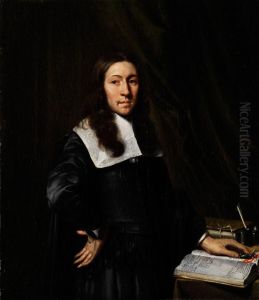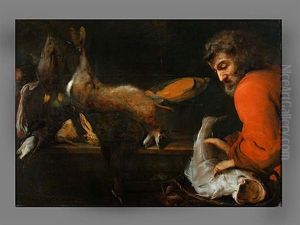Willem Eversdyck Paintings
Willem Eversdyck, also known as Guilliam or Willem Eversdijck, was a Dutch Golden Age painter born in 1618 in Goes, a town in the province of Zeeland in the Netherlands. His artistic journey began under the tutelage of his father, Cornelis Eversdijck, who was also a painter and served as the first significant influence on Willem's development as an artist. Willem's early works were influenced by the prevailing Flemish Baroque style, characterized by a strong sense of realism and attention to detail.
After his initial training, Eversdyck moved to Rotterdam, where he became a member of the Saint Luke's Guild, an association of artists. His membership in the guild, dated 1643, marks an important milestone in his career, signifying his recognition as a professional artist. Eversdyck's works from this period reflect a maturation of his style, often focusing on portraits and genre scenes. He became known for his adeptness at capturing the likeness and personality of his subjects, which made him a sought-after portraitist in the region.
Despite his success as a portrait painter, very little of Eversdyck's work has survived to the present day, making it challenging for art historians to fully evaluate his oeuvre. What is known, however, is that his paintings were highly regarded by his contemporaries, and he played a significant role in the artistic community of Rotterdam during the mid-17th century.
Willem Eversdyck's life and career were relatively short-lived; he died in 1671 in Rotterdam. His contributions to Dutch portraiture are often overshadowed by the more prominent figures of the Dutch Golden Age, such as Rembrandt and Frans Hals, yet his work remains a testament to the vibrant artistic culture of the Netherlands during this period. After his death, Eversdyck's style and technique continued to influence local artists, contributing to the enduring legacy of the Dutch Golden Age of painting.

